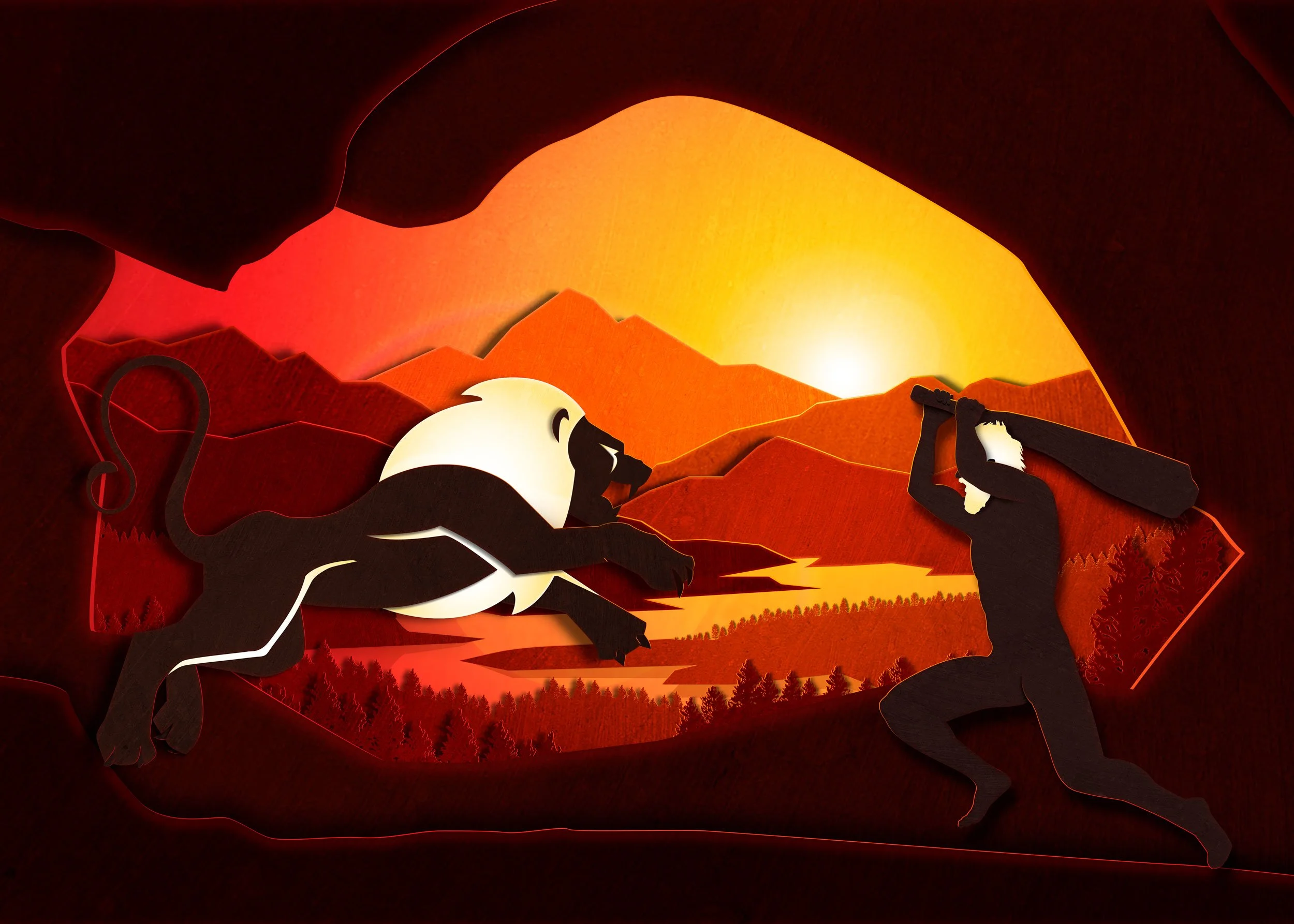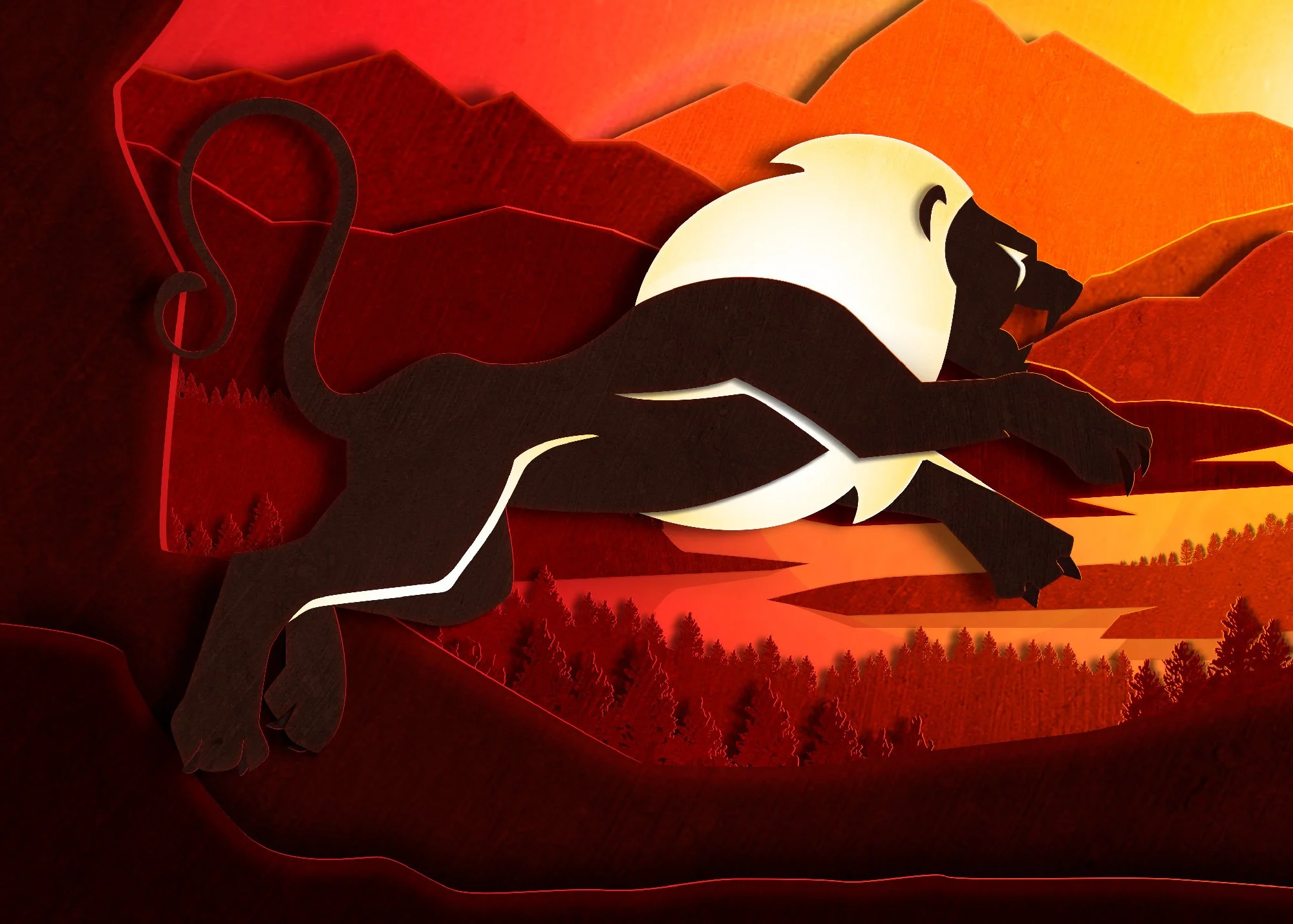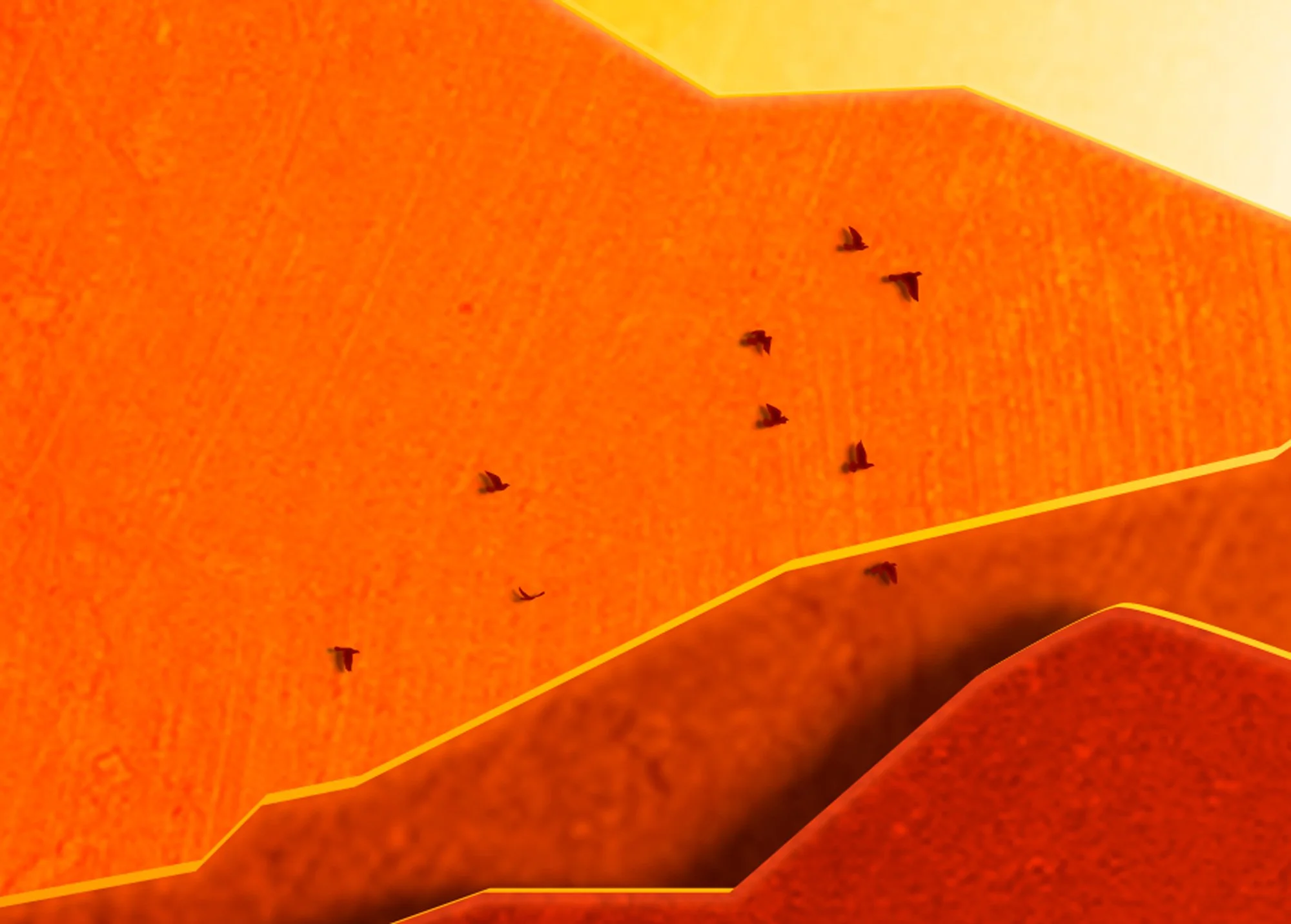Ancient Greek Mythology Tales of the Zodiac: The Story of Leo
Table of Content
The Tale of Leo the Lion

Under a blazing cosmic sky, the roar of Leo isn’t just heard, it’s felt. But what happens when the roar becomes a whisper?
Leo is an astrological sign known for its association with the Nemean Lion. It is the fifth zodiac sign and applies to individuals born between July 23 and August 22.
The tale of Leo is one of great courage, strength and the love of glory.
Those born under this sign possess a powerful spirit, confidence, and leadership qualities. They are natural leaders and have an innate ability to inspire others. Leo is a fire sign, which makes them passionate, energetic and creative. They are known to be warm-hearted, generous and loyal to their loved ones. While their desire for recognition and admiration can sometimes be self-centred, their positive traits far outweigh any negative ones. Overall, Leo is an exciting and dynamic sign that embodies the qualities of a true leader.
The Son of Typhon
Hera, the Goddess of women and marriage, had raised the Nemean Lion to cause chaos and harm the people of Nemean. Infuriated by her actions, the gods instructed Eurystheus, the King of Tiryns, to command Hercules, son of Zeus and a mortal woman, to rid the land of the beast and bring back its skin for his first labour.Hercules, known for his incredible strength and bravery, was equipped with a bow from Apollo and a sturdy club made from an olive tree. He set out on his mission to find the lion, which had been terrorising the people of Nemean for years.
Approaching Nemean's mountains, Hercules cautiously scouted the area, hoping to glimpse the beast before it saw him. He knew the lion was known for its incredible strength and invulnerability, as no weapon could penetrate its skin. But Hercules was determined to complete the task given to him by the Gods.
At dawn, Hercules spotted the lion, sitting like a proud king, covered in blood and meat from its recent feast. The lion had a fierce look in its eyes, and Hercules knew that he had to be careful in his approach. While it was occupied feeding, Hercules hid in a nearby bush, waiting for the perfect moment to attack. He knew he had to be quick and strategic, as the lion could easily overpower him if he made a mistake.
For The Love of Glory
After the lion had finished its meal, it licked its paws clean and returned to its lair at a steady pace in the general direction of Hercules. As the lion approached, Hercules grabbed his bow and slowly pulled back on the string, ready to aim and shoot.When the time was right, Hercules let loose an arrow at the lion's left flank, but to his surprise, it bounced harmlessly off. The lion growled in anger and, looking around for its attacker, suddenly, a second arrow hit the lion in the chest, but it too bounced off. The lion became even more agitated and spotted Hercules hiding in some bushes. As the lion charged towards him, Hercules grabbed another arrow and prepared for the attack.
With the lion charging, Hercules quickly swapped his bow for his club and stood ready to strike at the right moment. It was a moment filled with horror, but Hercules remained focused and determined to defend himself.
As the lion approached, it prepared to attack. It leapt towards its enemy, intending to bite into their flesh. However, at that moment, Hercules saw an opportunity and swung his club overhead, striking the lion's head and causing it to fall. The lion retreated to its cave in a daze and in pain.
While tracking the lion, Hercules discovered a cave with two entrances. He blocked one with a boulder, leaving the other open for himself to enter. This trapped the lion inside the cave. Upon entering, Hercules heard the wounded lion's cries echoing throughout the cave and followed the sounds to find it.
Catching the scent of Hercules, the lion retreated towards the blocked entrance. Trapped with nowhere to escape, the lion had no choice but to face his attacker for one last time. Cornered, the lion locked eyes with his attacker and leapt instantly into the air, with teeth sneering and claws pointing.
Hercules reacted quickly when he saw the lion attacking. He charged at the lion with his club and struck its head with great force, causing the club to split. In witnessing the lion swaying and trembling, Hercules saw his opening. He seized the lion by the neck and choked the lion with his bare hands until the lion lay motionless. Finally, after a long and terrifying battle, Hercules emerged victorious.
Bringing the Myth to Life Through Art
In my artistic pursuits, I created a depiction of the legendary battle between Hercules and the Nemean Lion, titled "For Love of Glory". The fight between the two was nothing short of epic, with both parties determined to emerge victorious. The battle's setting was a dark, ominous cave, adding to the intensity of the encounter. The Nemean Lion, known for its incredible strength and resilience, fought with all its might to protect its life. At the same time, Hercules was motivated by his pursuit of glory and fame. The stakes were high for both of them, and one mistake could prove fatal. The battle was a test of strength, courage, and determination, making it one of the most memorable moments in Greek mythology.
The Land of Nemean

Nemea is a small town located in the northeastern part of the Peloponnese, which now falls under the regional unit of Corinthia. The town got its name from a Naiad-nymph of the springs. It was made famous by the mythological story of Hercules overcoming the Nemean Lion.
In ancient times, Nemea was ruled by King Lycurgus and Queen Eurydice. They had a child named Opheltes, who met a tragic end by the attack of a serpent. As per the legend, Opheltes was accompanying his nursemaid Hypsipyle when they encountered Seven Argive Generals, who asked for directions to the nearest spring. Hypsipyle was happy to help, so she put Opheltes on a bed of parsley and left him alone to show the generals the path. However, this left Opheltes vulnerable to the serpent's attack, which ultimately proved fatal. The Neman Games, held every two years, were established to honour his memory. - Apollodorus, Bibliotheca 3.6.4
One of the significant historical events associated with Nemea is 'The Battle of the Nemea River'. This battle occurred during the Corinthian War in 394 BC, where Sparta and their allies fought against the Athenians. The battle is named after the Nemea River, located near the town, and it was a significant victory for Sparta.
The Nemean Lion

The Nemean Lion is a legendary creature that instilled fear in the hearts of people living in Nemea's mountain valley. The lion was known for ruling over the lands of Treotos, Apesas, and Nemea, wreaking havoc on townspeople and their livestock. The origins of the Nemean Lion are shrouded in uncertainty, with some tales suggesting that it was born from the union of Typhon and Echidna. In contrast, others believe it was the offspring of the Chimera or perhaps brought to life by Selene, the Titan goddess of the moon.
"The lion doesn’t ask for permission to roar, neither should you."
Regardless of its origins, the Nemean Lion was a monstrous beast with skin impervious to weapons. According to legends, swords would bend, and clubs and arrows would bounce off its skin without leaving a scratch, making it an unstoppable force feared by all. Its strength and invincibility made it a formidable foe that only a true hero could overcome.
Interestingly, it is said in Hyginus Astronomica 2.24.1 that Zeus, the king of the gods, placed the constellation Leo in the stars. Leo was considered the king of all beasts and worthy of a place among the stars. Unlike most constellations, Leo does not have an exciting story behind it, according to Hyginus. Nonetheless, it remains one of the most recognizable constellations in the night sky, and its association with the Nemean Lion continues to capture our imagination to this day.
Hercules - The First Labour

Driven mad by Hera, Hercules, unbeknownst to him, murdered his family. Thinking his household had intruders, he threw his children into a fire, burning them alive in a rage. In cold blood, he pounded his wife to death with his bare hands as she tried to protect their youngest.
In the wake of the horror and seeing his family butchered. Hercules standing in bewilderment, was approached by Amphitryon, who told Hercules of the horrors that had come to pass. Wanting to put himself into exile, he sought help from the Oracle of Apollo for where he should spend the rest of his days in exile. The priestess told Hercules to go to Tiryns and serve his cousin Eurystheus, the King of Tiryns, for twelve years and carry out ten labours given to Eurystheus by the Gods. And upon completing the tasks, he would receive his redemption and immortality.
In hearing the message from the Oracle, Hercules made his way to Tiryns, where Eurystheus, for this first labour, was to bring the skin of the Nemean Lion.
On his way to Nemea, Hercules came to Cleonae, where he met a poor shepherd called Molorchus, who allowed Hercules to lodge for the night. During the night of merry and wine, Hercules would tell stories of his adventure and the reasons for his visit to Cleonae. Molorchus, hearing of Hercules's loss, told him how his son was taken by The Nemean Lion and offered to sacrifice one of his flock for his safe return. Hercules, grateful for his offer, suggested that Molorchus wait thirty days. Telling him that if he returned, he would sacrifice the ram to the saviour Zeus, and if he didn't, to offer the ram as a mourning offering. The following day, Hercules went to Nemea to hunt for The Nemean Lion.
There is another story told of Hercules meeting a young boy. He told Hercules that if he returned, the town would sacrifice a lion to Zeus, and if he failed to return, the boy would sacrifice himself to Zeus (not too much pressure).
After The Nemean Lion died, Hercules skinned the lion with claws and carried it back to Cleonae, where Molorchus was preparing a mourning sacrifice. Molorchus, relieved to see Hercules with the lion draped over his shoulders, welcome him with open arms. Hercules pleased to see Molorchus, told Molorchus of his epic battle with the lion before sacrificing a ram to Saviour Zeus and taking his spoils back to King Eurystheus. - Apollodorus, Bibliotheca Book 2.5.1
Constellation Leo and Berenice Hair

Constellation Leo
Leo, the fifth astrological sign in the zodiac, is also a prominent constellation in the night sky. It is named after the Nemean lion that Hercules was tasked with slaying as one of his twelve labourers. The constellation is located towards the east, and its most notable feature is the regal figure of Leo's enemy, Leo Minor, perched above Hydra's head. Comprising nineteen stars, only nine are visible to the naked eye. In contrast, the others require the aid of a telescope to observe. The constellation's head is marked by two stars that indicate where the sun rises and sets, while its neck, chest, upper back, tail, and underbelly each have one or two stars.Berenice Hair
Berenice's hair, also known as Coma Berenices, is a remarkable asterism close to Leo's tail. The group of stars is believed to have originated from a legend surrounding Berenice II, the wife of Ptolemy III Euergetes. The story goes that Berenice vowed to cut off her hair if her husband returned safely from war. Upon his victory, Berenice fulfilled her promise and placed her hair at the temple of Aphrodite. However, the hair mysteriously disappeared, causing Ptolemy to become upset. To gain favour with the king, Conon of Samos, the court astronomer, claimed that the hair was transformed into a cluster of stars that did not belong to any constellation. Today, Coma Berenices is an easily recognizable triangle-shaped cluster of stars that is a fascinating sight to behold in the night sky. - Hyginus - Astronomica 2.24.1
The Meaning of Leo Zodiac sign

The symbol commonly associated with Leo is a closed hollow circle that features a long, curvy tail that resembles the majestic mane and spine of a lion. This emblem is said to embody a range of traits that are closely associated with the astrological sign of Leo. These qualities include self-expression, creativity, and passion, all considered hallmarks of the Leo personality. The circular shape of the symbol is thought to represent the cyclical nature of life. At the same time, the long, curvy tail is believed to symbolise the passionate and flamboyant nature of those born under this sign. Overall, the Leo symbol is a powerful and evocative emblem that captures the essence of this dynamic and charismatic astrological sign.
Another interpretation of the sign is Hercules's first labour of choking The Nemean Lion. The curved tail is Hercules positioning himself over the lion, while the closed circle could be the head of the lion itself. As shown in Peter Paul Ruben's Heracles and the Nemean Lion , you can almost see the Leo symbol in the painting. What do you think?
Unleash Your Inner Lion
As we journey through Leo season, let the lion’s bold spirit inspire you to step into your power, embrace your passions, and share your unique light with the world. Whether you’re a Leo yourself or simply feeling the influence of this radiant sign, now is the time to lead with courage and live with heart.
Are you a proud Leo, or do you have a special Leo in your life? Share your thoughts and stories in the comments below. We’d love to hear from you!
